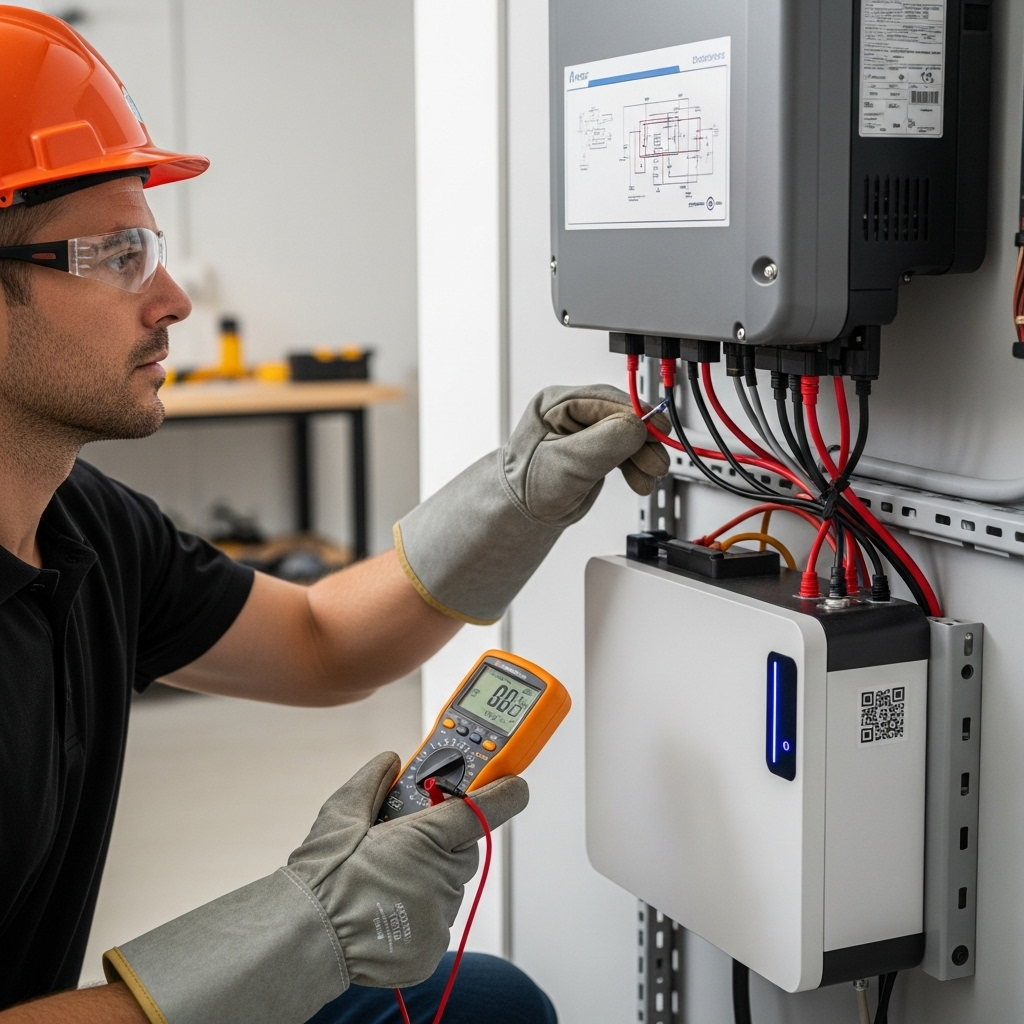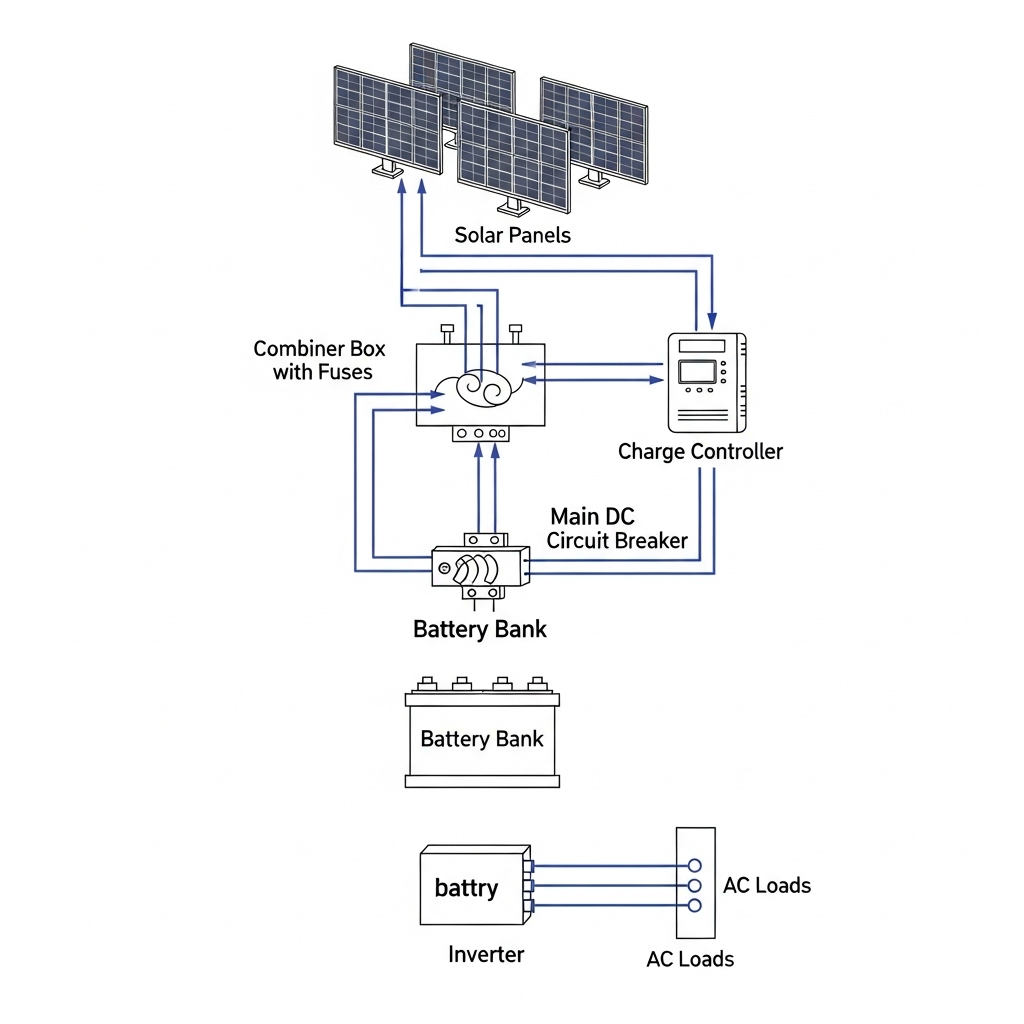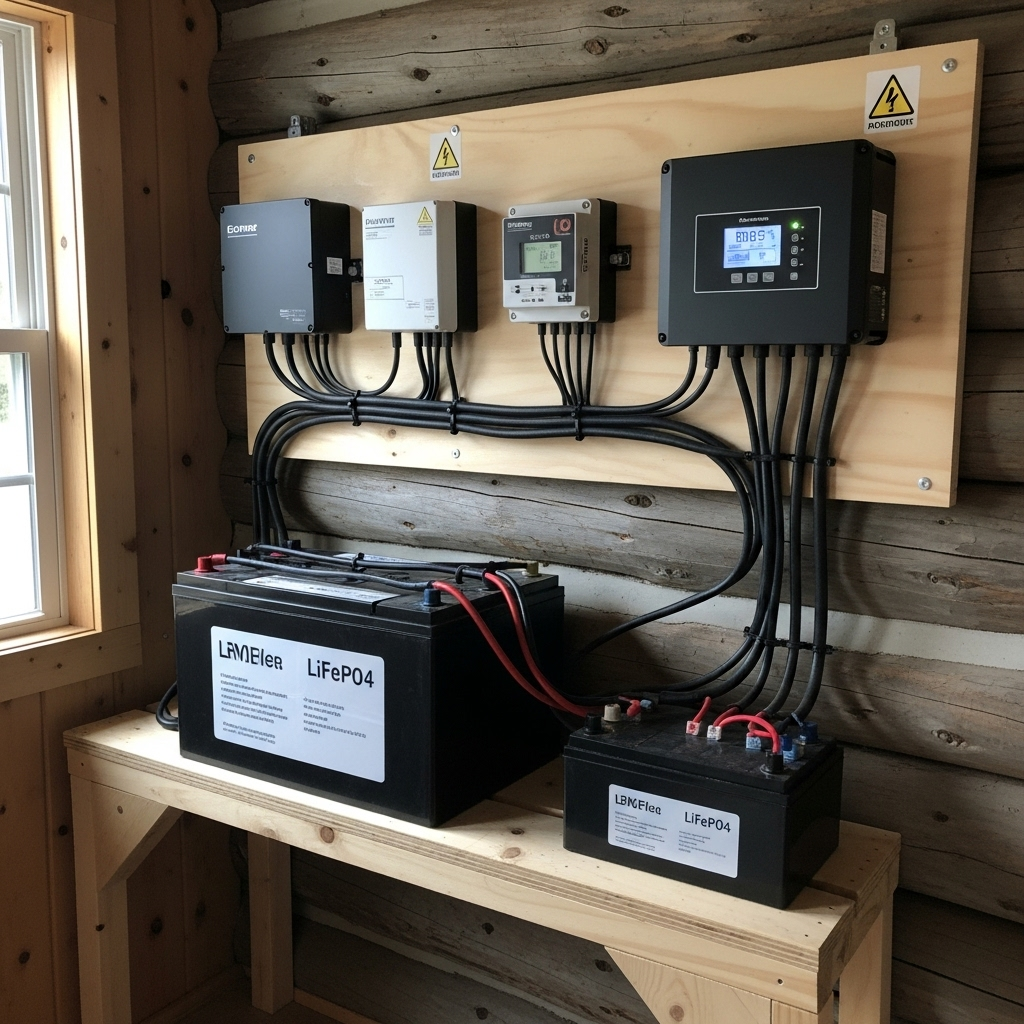Building your own solar power system is an incredibly empowering journey toward energy independence. But I want to be very clear from the start: you are not just assembling a kit; you are building a power plant. While the concept is simple, the execution involves lethal voltages. As someone who has been installing these systems for years, I can tell you that the difference between a safe, efficient system and a dangerous fire hazard comes down to the quality of the wiring and a deep respect for electricity.
This guide is not a substitute for professional training or hiring a licensed electrician. Instead, my goal is to share the fundamental principles and safety-first mindset we use in the field every day. We will cover the core components, the non-negotiable safety rules, and the common mistakes that can lead to catastrophic failure.
The Two Worlds of Solar: DC and AC Electricity
Every solar system has two sides, and you must understand both. The first is **Direct Current (DC)**. This is the power generated by your solar panels and stored in your batteries. It's the wild side of your system, often at high voltages that demand extreme caution. An arc fault on the DC side can be incredibly dangerous. The second is **Alternating Current (AC)**, which is created by your inverter. This is the standard, stable power that runs your home's appliances.
The Critical Path of Power: Core Components
Here’s how the power flows and the key components you'll be wiring:
- Solar Panels: Wired in series (to increase voltage) or parallel (to increase current). Your charge controller's specifications will determine the correct configuration.
- Combiner Box: For arrays with three or more strings, this is a non-negotiable safety device. It provides a central junction and, more importantly, allows you to add circuit breakers or fuses for each string.
- Charge Controller: This is the brain that protects your batteries. It takes the variable power from the panels and regulates it to prevent overcharging.
- Battery Bank: The heart of your off-grid system. I strongly recommend using **Lithium Iron Phosphate (LiFePO4)** batteries. Their inherent stability, long lifespan, and integrated Battery Management System (BMS) make them far safer than traditional lead-acid options.
- Inverter: This powerful device pulls DC power from the batteries and converts it into the AC power your loads will use.
- Disconnects & Fuses: These are your most important safety devices. A disconnect switch allows you to completely de-energize a circuit for maintenance. Fuses and circuit breakers are the seatbelts—they protect your wires from catching fire if there's a short circuit or overload. Every single circuit *must* have overcurrent protection.
The #1 Mistake I See: Improper Wire Sizing
Using undersized wire is the most common and dangerous mistake a DIYer can make. It's like trying to force a river through a garden hose. The wire will overheat, creating a serious fire risk, and you'll lose a significant amount of your hard-earned solar power to something called **voltage drop**. Your goal should always be to keep voltage drop under 3%. To do this, you must select your wire gauge (its thickness) based on two things: the amperage of the circuit and the total length of the wire run. Never guess. Use a voltage drop calculator and always err on the side of a thicker wire (a lower gauge number).
| Current (Amps) | Max Distance 10 AWG (ft) | Max Distance 8 AWG (ft) | Max Distance 6 AWG (ft) |
|---|---|---|---|
| 10A | 11 | 18 | 28 |
| 20A | 6 | 9 | 14 |
| 30A | 4 | 6 | 9 |
Note: This table is for illustration only. Always use a dedicated calculator for your exact system voltage and specifications.
My Core Safety Rules for Any Electrical Work
In the field, we follow these rules without exception. You should too.
PPE is Not Optional
Your first line of defense is your Personal Protective Equipment. Before starting, you must be wearing:
- Insulated Gloves: Rated for electrical work. Not garden gloves.
- Safety Glasses: An electrical arc is brighter than the sun and can cause permanent eye damage.
- Rubber-Soled Boots: To insulate you from the ground.
- No Jewelry: Remove rings, watches, and necklaces. Metal conducts electricity. Period.
The Lockout-Tagout-Verify Procedure
Never, ever work on a circuit you *think* is off. Prove it.
- Turn It Off: Open every disconnect and breaker that feeds the circuit. Cover the solar panels with an opaque tarp.
- Tag It: Place a tag on the breaker handle so no one can accidentally turn it on while you're working. This is the "lockout/tagout" procedure.
- Test It: Use a quality multimeter to test for voltage. First, test your meter on a known live source (like an outlet) to confirm it works. Then, test the circuit you plan to work on. Only when your meter reads "0 volts" is it safe to touch.
Grounding: The Unsung Hero of Safety
Proper equipment grounding is a critical safety path. It ensures that if a wire comes loose and touches the metal case of your inverter, the fault current has a safe path to the earth, which will trip the breaker. Without it, the entire chassis of your equipment could become electrified, waiting for someone to touch it.
Wiring Your Battery Bank: The Power Core
The energy density in a modern battery bank is immense and must be treated with respect. A LiFePO4 battery's integrated BMS is its first line of defense, preventing overcharge and over-discharge. Your job is to provide the second line: overcurrent protection.
The main battery cables connecting to your inverter will carry the highest current in your entire system. They must be correctly sized and protected with a large fuse or circuit breaker placed as close to the battery's positive terminal as possible. This is non-negotiable. This single fuse protects the entire system from a catastrophic short circuit.
Final Thoughts: Work Like a Professional
Building your own solar system can be one of the most rewarding projects you'll ever undertake. The key is to approach it with the mindset of a professional: methodical, respectful of the dangers, and absolutely committed to safety. Never rush. Double-check every connection. And if you ever feel uncertain, stop and ask for help. A safe, reliable system built with care will provide clean power and peace of mind for decades.
Disclaimer: This information is for educational purposes only and is based on professional experience. All electrical work is dangerous and carries the risk of injury or death. You must comply with all local electrical codes, regulations, and permitting requirements. If you are not a qualified professional, please hire one. This content is not a substitute for professional advice.





Leave a comment
All comments are moderated before being published.
This site is protected by hCaptcha and the hCaptcha Privacy Policy and Terms of Service apply.